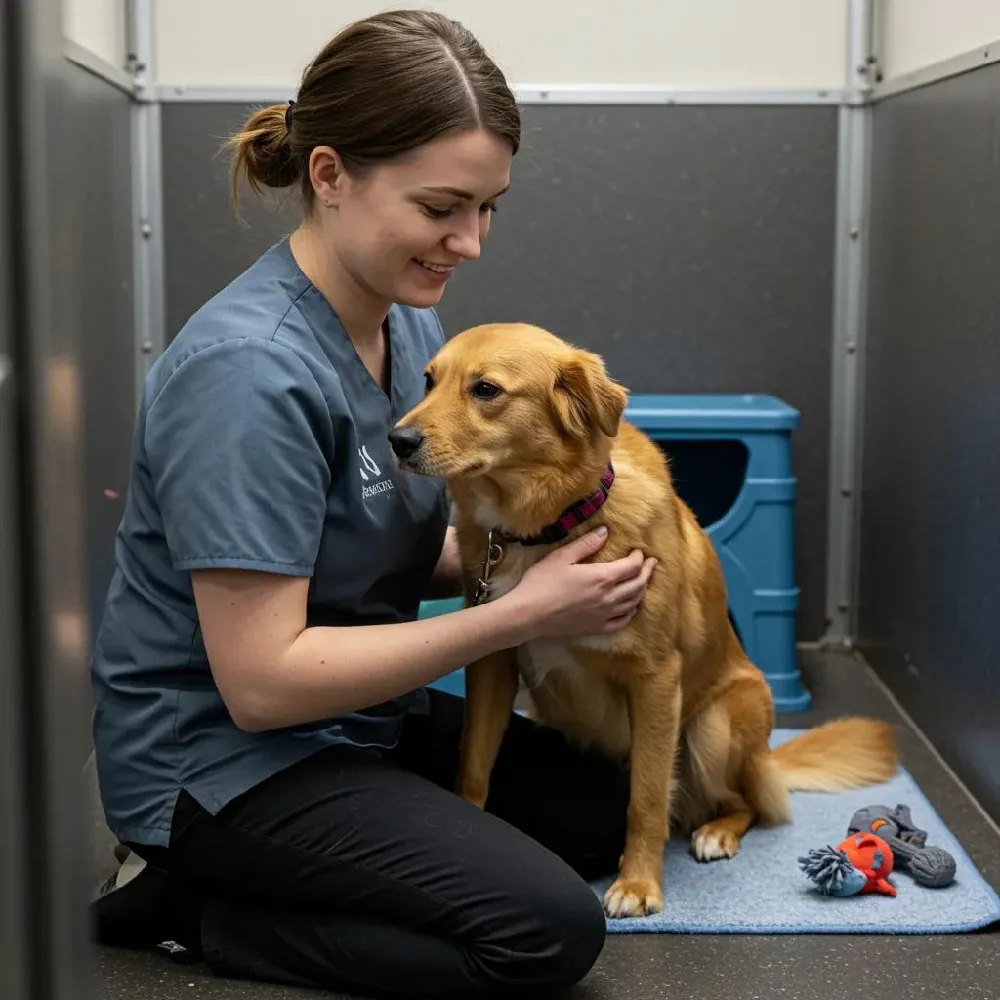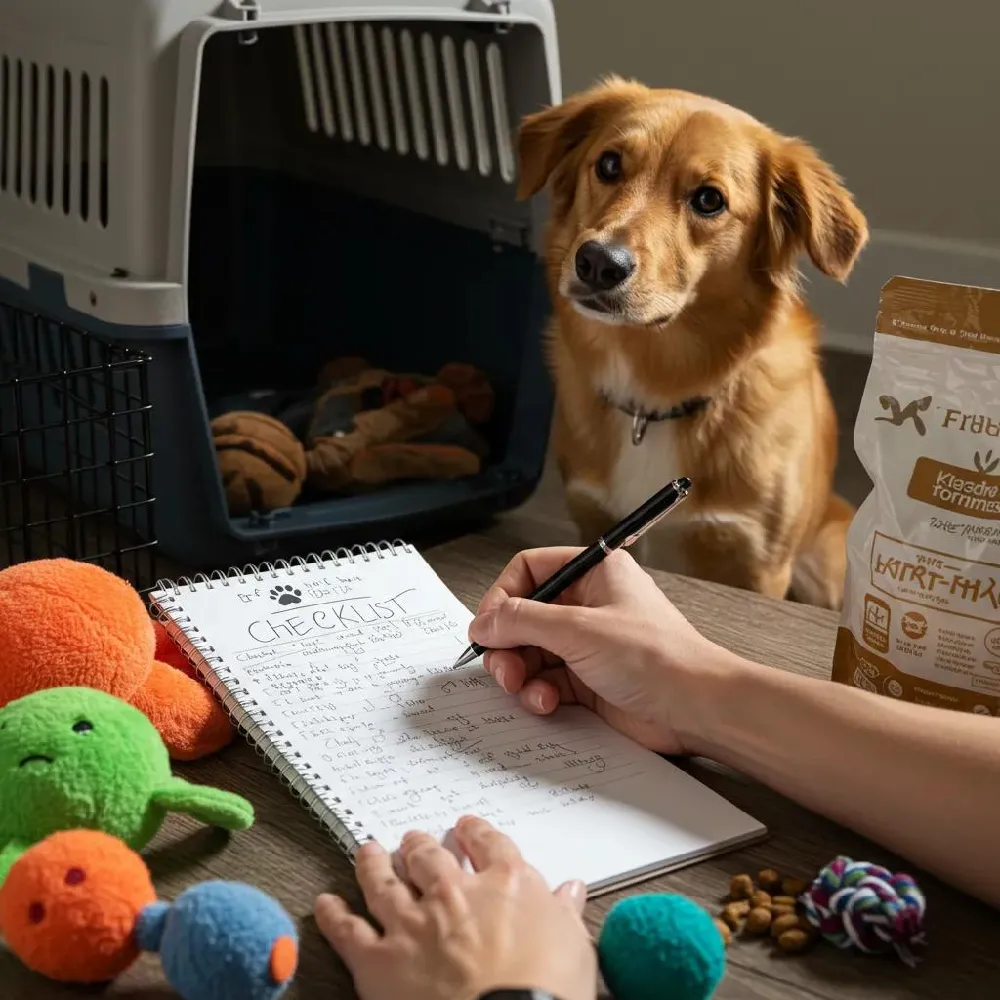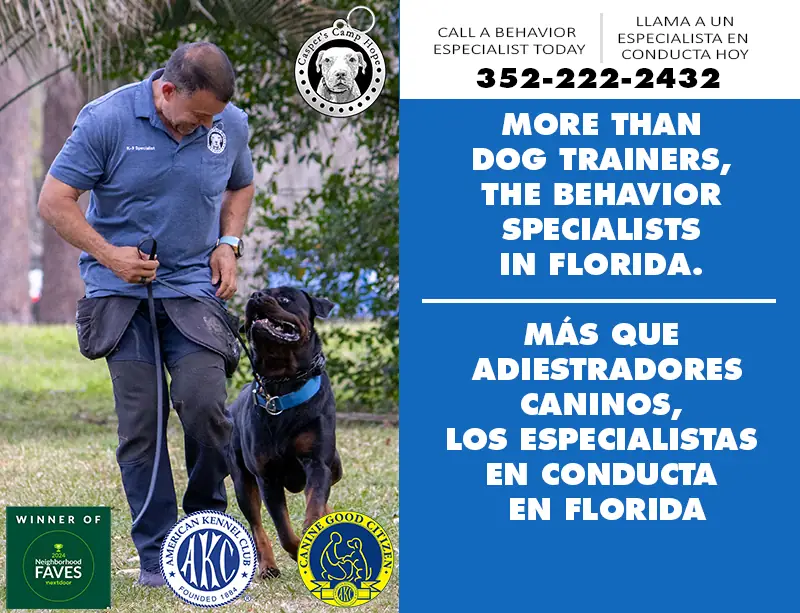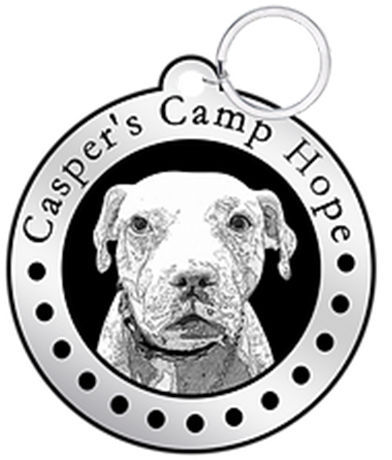.webp)
Home dog boarding pricing spans a broad spectrum because multiple factors influence the cost of home dog boarding services, from regional demand to pet-specific care needs. Pet owners often face sticker shock when quoted rates that vary by 50 percent or more overnight, creating uncertainty about budgeting for a trusted caregiver. This guide clarifies the core drivers of home boarding fees—average nightly rates, geographic influences, dog size and age, stay duration, service types, and add-on care—so you can anticipate expenses and choose the best value option. We’ll examine baseline cost ranges, compare standard and luxury offerings, explore location-based pricing, unpack dog-specific surcharges, assess stay-length discounts, survey facility differences, outline extra-service fees, and share tactics to manage expenses without compromising quality care.
What Are the Average Dog Boarding Rates Per Night and How Do They Vary?

Average home dog boarding rates typically fall between $25 and $85 per night, reflecting caretaker experience, amenities, and facility overhead. This baseline range helps owners forecast lodging costs and gauge whether a provider’s quote aligns with market norms. For example, a simple in-home stay with basic feeding and walking can start near $30 nightly, while packages that include daily play sessions and webcam access may approach $75–$85.
What Is the Typical Price Range for Home Dog Boarding Services?
Typical home dog boarding services cost between $30 and $60 per night, combining basic care and a comfortable environment. Providers charge these rates to cover food, bedding, routine walks, and homeowner liability. An average small-breed stay without add-ons usually lands in the $35–$45 range, whereas medium breeds with moderate activity levels trend toward $50–$60 nightly.
How Do Luxury Dog Boarding Costs Compare to Standard Rates?
Luxury dog boarding elevates the experience with private suites, enhanced playgroups, grooming, and 24/7 supervision, driving prices above standard home boarding. Upscale in-home sitters often charge $75 to $120 per night to accommodate premium amenities and lower caregiver-to-dog ratios. In contrast, standard home boarding remains around $40–$60 nightly, offering fundamental care without spa-style extras.
How Does Boarding Type Influence the Cost Per Night?
Boarding type directly determines overhead and staffing needs, which in turn shape nightly fees.
- In-Home Boarding: $30–$60 for a homelike setting with limited group sizes.
- Traditional Kennel: $25–$50 reflecting shared runs, basic supervision, and higher capacity.
- Luxury Pet Hotel: $80–$150 plus amenities like bedding upgrades and enrichment activities.
Understanding average rate structures sets the stage for examining how your location further modifies these cost baselines.
How Does Location Affect Dog Boarding Prices?
Location influences dog boarding pricing through local cost of living, market demand, and competitive landscapes. Urban areas with higher rent and labor costs typically charge 20–40 percent more than rural regions. Pet care businesses in metropolitan neighborhoods must factor in elevated overhead, while rural home sitters can afford to offer more moderate rates.
What Are the Differences Between Urban and Rural Dog Boarding Costs?
Urban dog boarding rates can reach $50–$100 per night due to high housing expenses and strong pet-care demand, whereas rural providers often price stays at $25–$45 nightly. This disparity reflects property costs and the number of local competitors vying for pet owners’ business.
How Does Local Cost of Living Impact Boarding Rates?
Local cost of living dictates baseline labor and supply expenses, with high-cost regions passing those charges onto clients. Caretakers in areas where rental and grocery prices exceed national averages adjust their rates upward to maintain profit, resulting in steeper boarding fees.
How Does Local Demand and Competition Influence Pricing?
High local demand and limited sitter availability allow providers to set premium rates, while saturated markets drive competitive pricing and occasional specials. Seasonal surges—such as holidays in resort towns—can spike nightly fees by 10–30 percent when capacity tightens.
Recognizing how geography shapes base fees empowers you to interpret quotes in context and decide if premium location charges align with your priorities.
How Do Dog Size, Breed, and Age Influence Boarding Costs?
Dog characteristics such as size, breed, and life stage alter resource needs, supervision levels, and liability considerations, affecting boarding fees. Larger dogs require more food, space, and sometimes additional handlers, while certain breeds or life stages demand tailored care protocols.
Why Do Larger Dogs Typically Cost More to Board?
Larger dogs typically incur higher rates because of increased food portions, more extensive bedding requirements, and space allocation. Providers often add $5–$15 per night for dogs over 50 pounds to cover these extra resources and adjust playgroup sizes for safety.
How Do Specific Breeds Affect Boarding Prices?
Breeds with known health issues or distinctive grooming needs—such as Bulldogs prone to respiratory distress or Poodles requiring specialized coat care—can trigger breed-specific surcharges. Caretakers may charge an additional $5–$10 nightly to manage breed-related protocols and equipment.
What Is the Impact of Puppy or Senior Dog Status on Pricing?
Puppies need more frequent feeding, bathroom breaks, and socialization, while senior dogs often require gentle handling and medication administration. Providers may add $5–$12 per night for puppies and $8–$15 for seniors to cover the extra attention, low-impact exercise, and health monitoring required.
How Do Temperament and Behavioral Needs Affect Costs?
Dogs exhibiting anxiety, aggression, or complex behavioral conditions necessitate one-on-one supervision, specialized training approaches, or secure housing, adding $10–$20 per night. These adjustments ensure safety for all animals and compensate for the caregiver’s expertise and time.
By factoring dog-specific attributes into pricing, you can anticipate surcharges and prioritize sitters skilled in handling your pet’s unique needs.
How Does the Duration of Stay Affect Dog Boarding Pricing?
Stay length influences per-night rates through discount structures and seasonal pricing policies. Extended bookings spread overhead over more nights, while peak-season surcharges apply to shorter stays during holidays and high-demand windows.
What Are the Daily and Nightly Rates for Dog Boarding?
Daily drop-in or daycare rates range from $20 to $40, whereas overnight boarding typically costs $30 to $80 per night. Daycare packages offer shorter supervision blocks at lower unit prices, while overnight stays include overnight staff oversight and sleeping accommodations.
Are There Discounts for Weekly or Monthly Boarding?
Many providers offer 10–20 percent discounts for week-long stays and up to 25 percent for month-long bookings to secure steady occupancy. These incentives can reduce a $50 nightly rate to approximately $40 when prepaying for seven or more consecutive nights.
How Do Holiday and Peak Season Surcharges Impact Costs?
Holiday weeks—such as late December or early July—often see nightly fees rise 15–35 percent due to increased demand and limited availability. Owners can expect a base rate of $50 to climb to $60–70 during these peak windows without early reservations.
Longer stays and off-peak timing can soften overall lodging expenses, enabling more predictable budgeting for extended travel.
What Types of Dog Boarding Services Are Available and How Do Their Costs Compare?

Service environments range from basic kennels to personalized in-home care, with veterinary boarding and pet hotels offering specialized or luxury care at premium rates. Each setting balances safety, amenities, and cost differently.
How Do Traditional Kennels Compare to Home Dog Boarding Prices?
Traditional kennels charge $25–50 per night for communal runs, scheduled walks, and basic feeding. In-home boarding averages $30–60 nightly for smaller groups in a homelike environment, often including more personalized attention.
What Are the Costs of Veterinary Boarding for Medical Needs?
Veterinary or clinic boarding accommodates dogs requiring ongoing medical attention, with nightly fees from $60 to $120. These rates cover professional nursing care, medication administration, and emergency readiness that standard sitters cannot provide.
How Does In-Home Boarding Pricing Differ from Facility-Based Services?
In-home boarding blends residential comfort with caregiver interaction, costing $35–75 per night. Unlike facility-based services, solo care settings allow flexible routines and integration into a family environment, often at a modest premium over kennel rates.
Are Luxury Pet Hotels Worth the Extra Cost?
Luxury pet hotels charge $80–150 nightly for upscale suites, spa services, curated play activities, and premium food. For owners seeking resort-style accommodations and added enrichment, this option delivers exceptional comfort but represents the highest cost tier.
Evaluating the trade-off between price and environment helps match your dog’s temperament and your budget with the ideal boarding type.
What Additional Services and Special Needs Affect Dog Boarding Costs?
Add-on offerings and special-needs accommodations create further pricing layers, enabling tailored care but increasing nightly fees. Grooming, training, medication, extra playtime, and specialized diets each carry distinct charges.
How Much Do Grooming and Spa Services Add to Boarding Costs?
Basic bathing, brushing, and nail trims typically cost $25–50 per session, while full grooming packages with styling and de-shedding can add $60–100. Providers schedule spa visits during stays, applying these fees on top of lodging.
What Are the Fees for Training Programs During Boarding?
Training add-ons—ranging from basic manners to specialized obedience—run $20–40 per session. Extended behavior modification programs can total $150–300 per week, reflecting the instructor’s credentials and session frequency.
How Is Medication Administration Priced in Dog Boarding?
Medication administration—including insulin injections or oral dosing—adds $5–15 per dose or a flat $10–25 nightly surcharge. This fee compensates caregivers for careful handling, record-keeping, and potential emergency coordination.
What Are the Costs for Extra Playtime and Personalized Attention?
Enhanced one-on-one play sessions or private yard time cost $10–20 per 30-minute block. These personalized enrichment activities supplement group play and address dogs that thrive on focused interaction.
How Do Special Dietary Requirements Influence Pricing?
Prescription or raw-food diets often incur a $5–15 nightly surcharge to cover premium ingredients and storage protocols. Providers with limited special-diet capacity may apply flat weekly fees instead of per-night charges.
Detailing add-on prices helps you anticipate the total boarding bill and select services that align with your dog’s needs.
How Can You Manage and Lower Your Dog Boarding Costs Without Compromising Care?
Proactive planning and informed choices unlock savings on boarding without sacrificing quality. Leveraging discounts, timing strategies, and transparent pricing inquiries ensures you get the best value for your budget.
What Are Effective Ways to Book Early and Secure Discounts?
Reserving stays several months in advance often yields early-bird discounts of 5–15 percent. Providers reward guaranteed bookings by applying rate reductions or complimentary add-ons for clients who confirm dates ahead of peak seasons.
How Do Multi-Dog Boarding Discounts Work?
Many sitters offer 10–20 percent off the base rate for each additional dog in the same household, recognizing that shared care reduces per-pet overhead. This structure can cut a two-dog family’s combined lodging cost significantly when dogs board together.
When Is Off-Peak Boarding More Affordable?
Off-peak periods—typically January through March and late August to mid-October—see slower demand and unadvertised rate cuts of 5–20 percent. Scheduling travel during these windows secures lower nightly fees and more flexible spot availability.
What Should You Look for in Standard Boarding Inclusions to Avoid Extra Fees?
Clarifying which services—like daily walks, feedings, and basic attention—are included in the base rate helps avoid surprise charges. Ask for an itemized list of standard inclusions and compare providers to determine which offers the most comprehensive package at no additional cost.
Implementing these tactics reduces total expenses while ensuring your dog receives consistent, attentive care.
What Are the Most Common Questions About Home Dog Boarding Costs?
Dog owners frequently ask how much overnight stays cost, whether weekly packages save money, and how boarding compares to pet-sitting alternatives. Understanding these common concerns equips you to make cost-effective arrangements without compromising care.
What Is the Usual Price for Overnight Dog Boarding?
Overnight home dog boarding typically ranges from $30 to $60 per night, varying by region, dog size, and service level. This estimate covers basic lodging, feeding, and routine supervision in a residential setting.
How Much Does It Cost to Board a Dog for a Week?
Weekly boarding packages usually start at $200 and can rise to $450, depending on nightly rates and any extended-stay discounts. A standard $50 nightly rate with a 15 percent weekly discount yields a $298 total for seven nights.
Is Boarding or Hiring a Pet Sitter More Affordable?
In-home boarding often costs $35–60 nightly for group care, while private pet siters charging per visit average $20–35 per day. Pet siters may require multiple daily visits, making full boarding more cost-effective for extended absences.
What Is Included in Standard Dog Boarding Rates?
Standard rates generally include overnight lodging, two daily feedings, routine walks, and basic play. Additional charges apply for grooming, training sessions, medication administration, and specialized diets.
How Can I Find Affordable Dog Boarding Options?
To locate budget-friendly boarding, search outside peak travel seasons, compare local home siters versus facility rates, and request early-booking specials or multi-pet discounts. Visiting providers in person and asking for bundled packages often uncovers unadvertised savings.
By answering these frequent questions, you can quickly benchmark costs and uncover the best boarding approach for your dog and budget.
Dog boarding costs vary widely due to factors such as location, pet characteristics, stay duration, service type, and additional needs. Balancing these variables with savings strategies like early booking, multi-dog discounts, and off-peak scheduling helps manage expenses without sacrificing care quality. Understanding the breakdown of nightly rates, add-on fees, and facility differences empowers pet owners to choose a boarding solution that fits both their budget and their dog’s comfort requirements.




